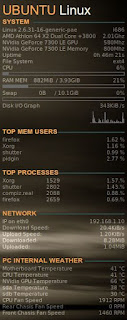Creating a simple local Ubuntu repositories
Setup Install dpkg-dev. sudo apt-get install dpkg-dev Create local repository directory. sudo mkdir /path/deb Create an update script in the local repository directory with these three lines: #! /bin/bash cd /path/deb dpkg-scanpackages . /dev/null | gzip -9c > Packages.gz Make the script executable. sudo chmod 755 update_local_repo_script Add local repository into the Ubuntu software sources. Use the line below: deb file:/path/deb ./ You can either manually edit /etc/apt/sources.list file or you can use the GUI application: System > Administration > Software Sources Usage Download deb package files from internet to /path/deb. Run update script sudo /path/deb/update_local_repo_script Run Ubuntu repositories update sudo apt-get update You can now start installing the downloaded application using either apt-get command or Synaptic Package Manager.


